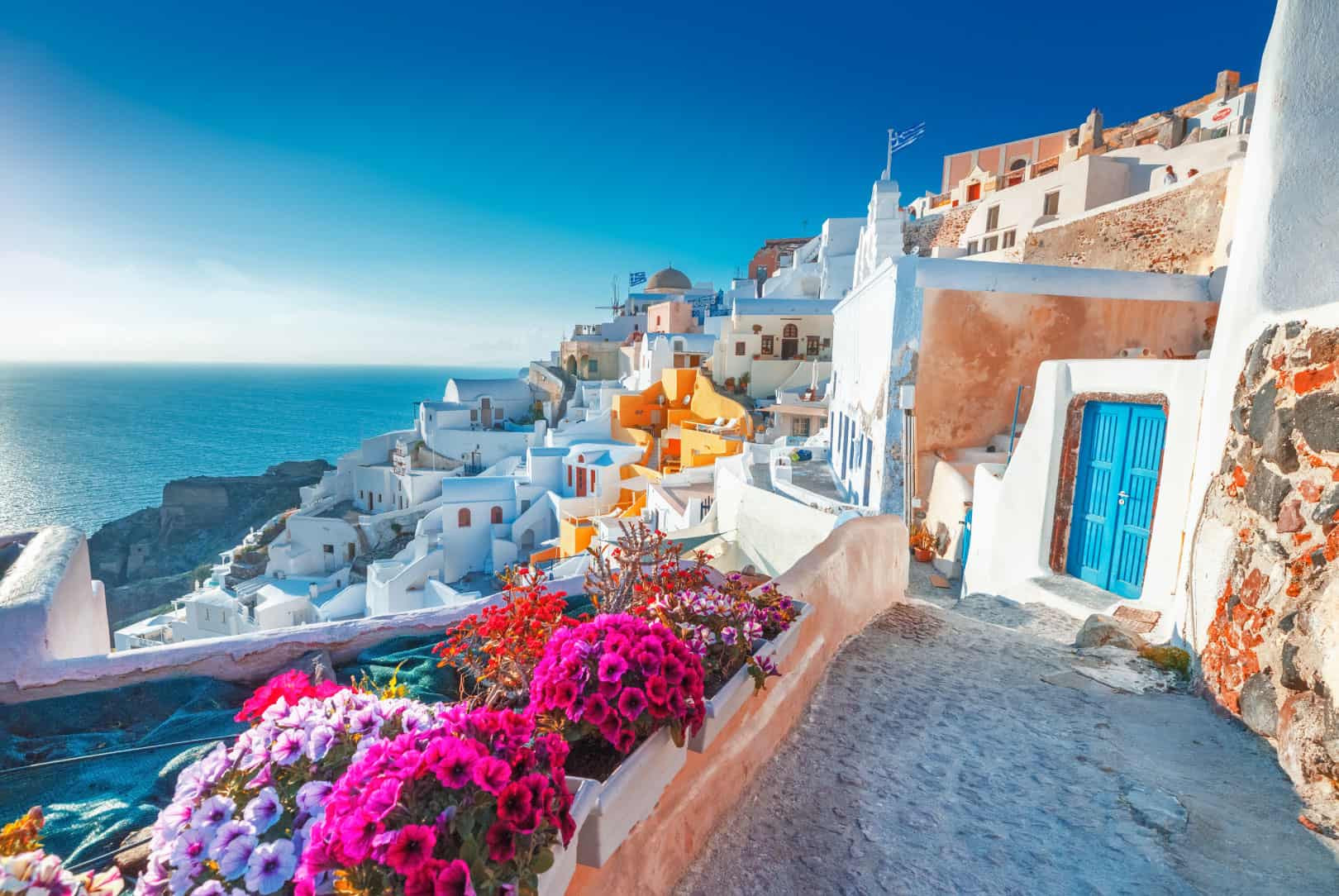Every time a visitor takes his first steps on a Cycladic island, he is instantly mesmerized by the complexity of the settlements and the elegant simplicity of the architectural forms. Narrow, cobbled streets mesh into what seems like a labyrinth of picturesque buildings with white-washed walls, juxtaposed to the emerald waters of the sea below. Colorful bougainvilleas add delicate touches of bright tones during the summer, tempting our sight to rest on them and revel in the dreamy image.
The Cycladic architecture is easily recognized by its unique characteristics. The plain construction and minimalistic design derive from both cultural and environmental needs that have developed through the centuries. As the Islands were prone to piracy, the houses were built on high altitude, in order to spot a private invasion on time. Protection from the pirates was also the reason behind the small windows and doorways. The natural environment also dictated a certain way of architectural development. The lack of wood led to short beams and, therefore, single – level houses of low height. Oriented towards the South-East to attract light, all houses featured thick walls to preserve the heat during winter while a petite window on the northern side was always present to keep the temperature low in summer with the help of the northern breeze (meltemi). The density of the settlements is anything but chance – it reflects the contemporary bioclimatic design in its past form.
Although the architecture of the Cyclades is usually perceived as a unity, it is really quite diverse. Each island has a unique set of characteristics that emerge from its rich history and cultural inheritance. The Venetian influence is evident in many islands where castles and towers can be found, (ex. Naxos, Andros), while the underground housing in the volcano Caldera in Santorini is an outstanding phenomenon. Some of the most impressive neoclassical buildings can be found in Ermoupolis, Syros while houses with red tiled roofs contrast the blue in islands such as Kythnos or Kea. The abundance of quality marble inspired some of Greece’s most famous sculptors, whose work is apparent in almost every building – Tinos is a wonderful example, where the department of Marble Carving of the National School of Fine Arts is located as well.
The overall experience of a visit in the Cycladic islands is truly magical and will lead you to a journey back in time, while the high aesthetics delicately construct a dream around you. Exceptional houses, churches, mills and dove cots create an image of unparalleled beauty that one can meet exclusively in the Cyclades.




